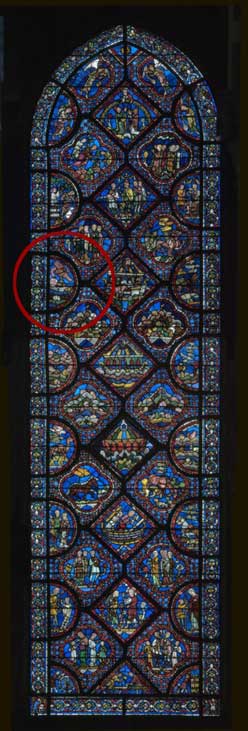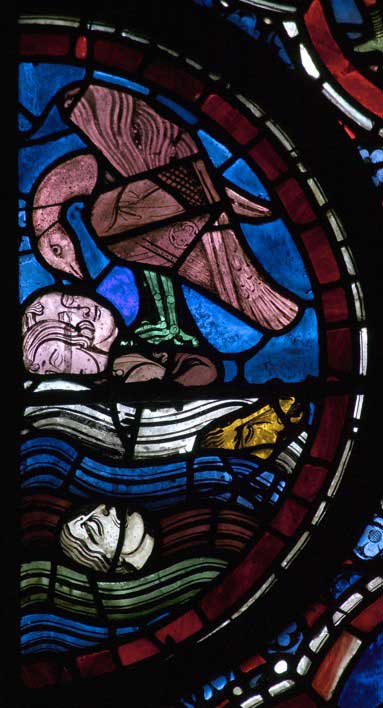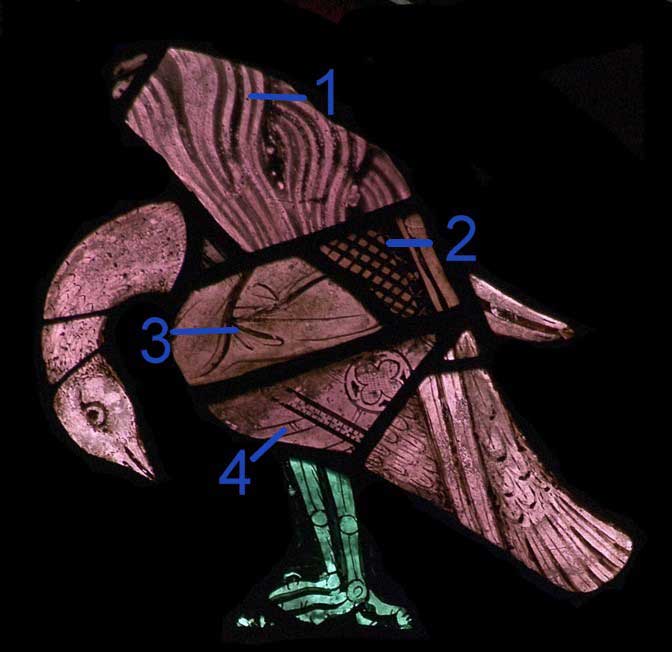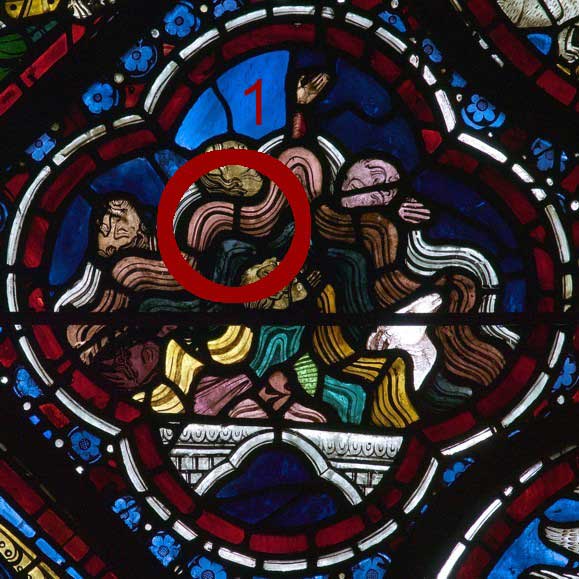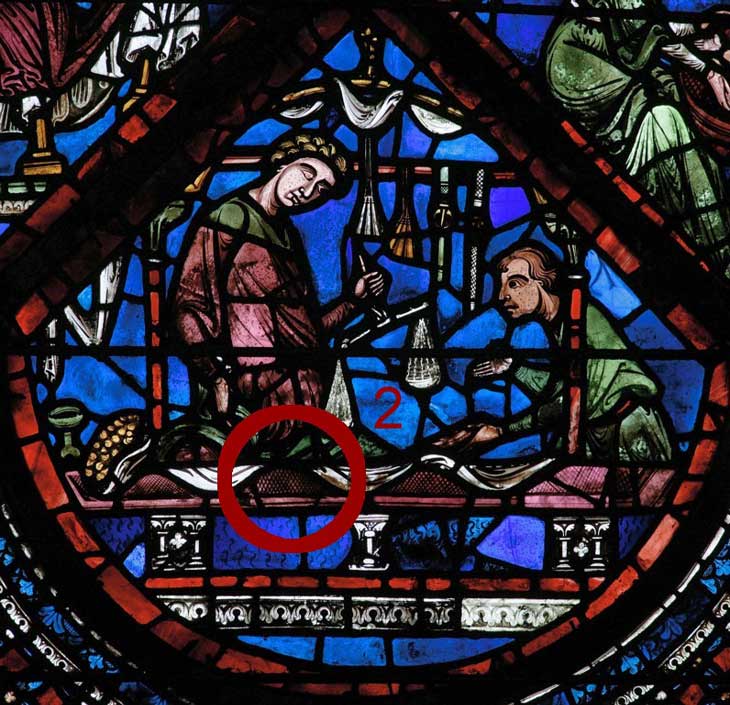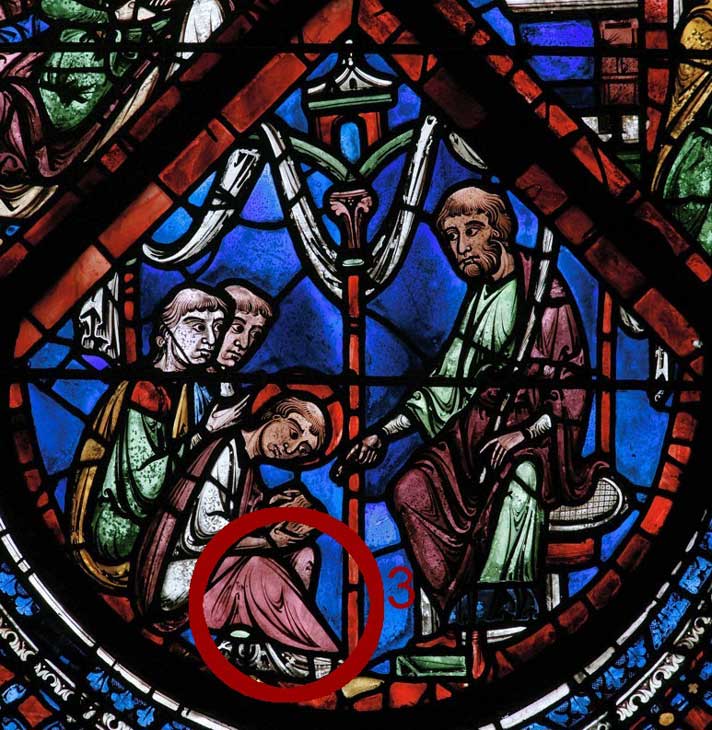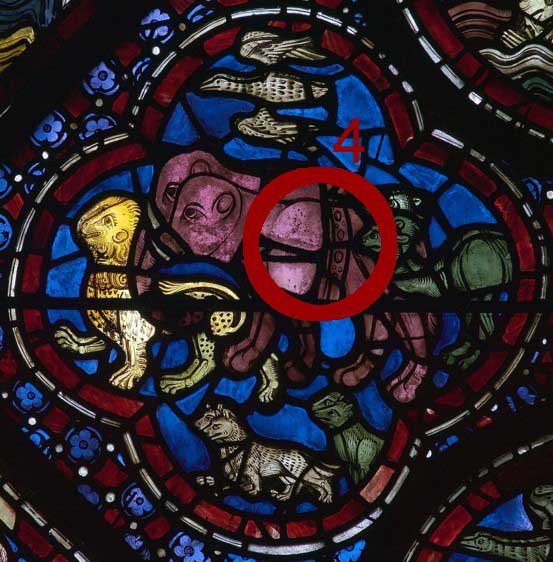Another look at the cathedral’s stained-glass windows: replacing broken glass and recovering old pieces. Like an investigator…
Doubtless the panel received a rather violent blow, since more than half the feathers had to be replaced in the end, while no breakage lead was used – with which broken glass could have been ‘glued’ back together. All this might suggest a real ‘hole’, with parts missing after falling to the ground.
Four pieces, of ‘foreign’ origin, were re-used for this purpose. How were they obtained? No doubt from similar accidents. In this case, the only criterion is color.
